We offer medical detox and multiple addiction treatment options in our
luxury treatment centres in Port Hope, Cobourg, and Ottawa.
The Black Market and Addiction: The Dangerous Link
The shadowy realm of Canada's black market serves as a major conduit for addiction-fueling substances worldwide. Operating beyond legal boundaries, these underground networks distribute everything from counterfeit pharmaceuticals to street drugs, creating a perilous ecosystem that traps vulnerable individuals.
Key Takeaways
- Black Market and Addiction: The black market fuels addiction by distributing dangerous, unregulated substances, hindering recovery efforts.
- Health Risks: Black market drugs are unpredictable and often contain harmful adulterants, leading to overdoses and long-term health issues.
- Economic Strain: Addiction drives financial ruin, leading to job loss, debt, and criminal activity.
- Comprehensive Solutions: Addressing addiction requires a mix of harm reduction, prevention, and treatment strategies, alongside stronger enforcement.
The relationship between black market drugs and addiction forms a devastating cycle, one that leaves users facing unpredictable substance quality, legal jeopardy, and heightened health risks. This dangerous partnership undermines addiction recovery efforts while simultaneously feeding substance dependency across communities of all socioeconomic backgrounds.

Understanding the Black Market
What is the black market exactly? At its core, it represents vast networks of illicit exchange that churn beneath society's surface. The black market meaning encompasses all commerce that dodges taxation, regulation, and legal oversight. Unlike conventional markets, these shadow economies lack consumer protections, quality standards, or ethical boundaries. They thrive in regulatory gaps across borders and economic systems.
These networks form a twisted supply chain feeding addiction across Canada. From mountain poppy fields to city street corners, black market drugs move through elaborate distribution systems involving producers, smugglers, wholesalers, and street-level dealers. Common substances include diverted prescription medications, synthetic opioids, cocaine, and methamphetamine.
The underground black market doesn't just distribute traditional narcotics. Counterfeit pharmaceuticals, sometimes containing deadly fentanyl, slip into communities disguised as legitimate medication. Meanwhile, black market records track debts and territories rather than sales and inventory—all managed through encrypted communications and cryptocurrency transactions that leave minimal paper trails.

The Dangerous Accessibility Loop: A Key Driver of Addiction
Getting hold of illicit substances has never been simpler. The underground market operates through layered distribution channels—from dark web marketplaces to street-corner exchanges. This accessibility creates a dangerous paradox: the easier drugs are to obtain, the harder addiction becomes to escape.
For first-time users, the barrier to entry keeps dropping. Synthetic drugs reach suburban neighborhoods through social media connections and encrypted messaging apps. Meanwhile, long-term users maintain their habits through familiar dealer networks even when conventional supply chains falter.
Illicit substance delivery services have proliferated in recent years, mirroring legitimate e-commerce models. These operations eliminate the minimal social barriers of in-person transactions, making drug acquisition virtually frictionless. The convenience factor significantly contributes to habitual use patterns as obtaining substances requires minimal effort or planning.

Does the Black Market Intentionally Create More Addicts?
Canada's black market actively engineers addiction expansion through calculated business strategies. Dealers offer "sample promotions" in university districts and at music festivals, deliberately introducing potent substances to opioid-naive individuals. The market's evolution toward designer drugs with enhanced addictive properties demonstrates its predatory nature—these aren't merely suppliers meeting demand but architects creating it.
Regions with increased black market distribution networks consistently show 30-40% spikes in addiction rates within 18 months. This manufactured addiction crisis transforms experimental users into dependent customers through calculated exposure techniques.
Unlike regulated industries that face consequences for harmful practices, the black market operates with the explicit goal of cultivating addiction as a business model—creating the very problem it then exploits for profit. Without directly targeting and disrupting these predatory market practices, addiction rates will continue their alarming upward trajectory across Canadian communities.
Why Are Black Market Drugs So Dangerously Unpredictable?
Black market drugs come with no ingredient lists, dosage guidelines, or quality control. Users essentially become unwitting test subjects for unpredictable chemical compounds.
Pills pressed in basement operations might contain anything from chalk to lethal fentanyl analogs. A batch that provided a manageable high yesterday could trigger an overdose tomorrow. This inherent unpredictability introduces extreme risk with each instance of consumption.
The deadly consequences manifest in alarming ways:
- Counterfeit oxycodone tablets containing fentanyl at 50 times the lethal dose
- Cocaine cut with levamisole, a veterinary deworming agent that destroys immune function
- MDMA tablets containing bath salts or methamphetamine, causing dangerous psychological effects
- Injectable drugs contaminated with bacteria, particulates, or other substances causing abscesses, endocarditis, or sepsis

Economic Ruin as The Result of Black Market Addiction
Addiction through underground black market channels creates a vicious economic cycle. Users initially purchase affordable quantities, but as tolerance builds, the financial burden spirals.
Job loss, drained savings, and mounting debt push many toward increasingly desperate measures to maintain their supply. This desperation might involve:
- Selling personal possessions
- Committing property crimes
- Engaging in sex work
- Becoming low-level dealers themselves
The black market records these debts in its own brutal accounting system. Unpaid drug debts don't end up in collection agencies—they're settled through intimidation, violence, or coerced participation in criminal activities.
This economic treadmill transforms addiction from a health challenge into a comprehensive life crisis. The deeper someone falls into this system, the more completely it swallows their resources, relationships, and decision-making autonomy.
The relentless cycle continues as withdrawal symptoms push users back toward suppliers, regardless of mounting consequences. Physical dependency keeps individuals trapped in this system even when they intellectually understand the harm it causes.
Broader Societal Impacts of Black Market Drugs
The health fallout from black market drugs extends far beyond the immediate effects of intoxication in Canadian communities. When users inject substances prepared without sterile practices, bloodborne pathogens spread rapidly. Hepatitis C tears through communities where needle sharing occurs, causing liver damage that remains silent until advanced stages. HIV transmission rates spike in areas where addiction outpaces access to clean injection equipment.
Overdose deaths represent just the visible tip of a medical catastrophe. For each fatality, dozens more experience non-fatal overdoses that leave lasting neurological damage from oxygen deprivation. The unpredictable potency of street drugs makes every use potentially lethal, especially with synthetic opioids like carfentanil, which can kill in microscopic amounts.
Long-term organ damage accumulates silently. Kidneys shut down from impurities. Hearts develop endocarditis from bacterial contamination. Lung scars from inhaled fillers and adulterants never meant for human consumption.
The underground market doesn't just harm individuals—it corrodes entire neighborhoods. Property values plummet as drug activity increases. Businesses relocate when the clientele feels unsafe. This economic flight strips communities of resources precisely when they need them most.
Children grow up normalizing addiction when open drug use becomes commonplace. Schools struggle with truancy and diminished academic performance as family stability crumbles. The intergenerational impact ripples outward:
- Parents caught in addiction cycles can't provide consistent care
- Children witness overdoses and violence as routine events
- Youth recruitment into dealing networks targets economically vulnerable teens
- Family resources divert from education and nutrition to feeding habits
Public spaces transform in subtle ways—parks empty of families, libraries install sharps containers, and emergency services face constant burnout from repeated overdose calls to the same locations.

The Complexities of Policing the Black Market
Policing the underground black market creates impossible dilemmas. Arrest-focused approaches fill jails without addressing addiction drivers. Meanwhile, limited budgets stretch between interdiction efforts and community protection.
When officers target street-level dealers, they often capture individuals whose own addictions drove them into selling. Higher-level suppliers simply recruit replacements from the same vulnerable populations. This revolving door taxes court systems while failing to disrupt supply chains.
Corruption risks increase where massive profits tempt underpaid officials. Black market records document payoffs that ensure certain areas remain enforcement-free zones, undermining public trust in institutions meant to maintain order.
Healthcare and criminal justice systems face mounting costs without corresponding improvements in outcomes. Emergency departments become de facto detox centers without adequate resources for this specialized care. The cycle continues unbroken despite enormous public expenditures.
Combating the Dangerous Link: Solutions and Approaches
Rethinking Law Enforcement Strategies
Conventional enforcement approaches have proven insufficient in addressing the Canadian black market fundamentally. Smart enforcement now targets supply chain disruption rather than end-user arrests. Financial investigation units freeze assets and expose money laundering operations that keep illicit enterprises afloat.
International cooperation tackles cross-border trafficking through intelligence sharing and coordinated operations. When countries align their enforcement priorities, smuggling corridors narrow significantly. Digital forensics teams infiltrate online marketplaces where vendors peddle everything from synthetic cannabinoids to prescription stimulants.
Yet, enforcement alone falls short. Police departments increasingly partner with public health agencies, creating diversion programs that route users toward treatment instead of incarceration. This shift recognizes addiction as a health condition rather than purely criminal behavior.
Pragmatism Over Punishment
Harm reduction acknowledges a stark reality: People will use substances despite the legal consequences. This approach minimizes danger without requiring immediate abstinence.
Supervised consumption sites offer medical oversight during drug use, preventing fatal overdoses through immediate intervention. Clean needle programs reduce infectious disease transmission while creating engagement opportunities with marginalized users. Drug-checking services identify dangerous adulterants before consumption.
Medication-assisted treatment provides regulated alternatives to black market drugs. Methadone and buprenorphine programs stabilize opioid users, eliminating the financial pressure to commit crimes while reducing overdose risk. These evidence-based interventions cost far less than cycling people through emergency rooms and jail cells.
Technology now supports harm reduction through:
- Anonymous text services warning about contaminated drug supplies
- Mobile apps connecting users to naloxone carriers nearby
- Wearable devices detecting respiratory depression and alerting emergency services
- Telemedicine addiction consultations reaching rural communities

Breaking Cycles Through Prevention
Prevention efforts target vulnerability factors before addiction takes hold. School-based programs now focus less on scare tactics and more on decision-making skills and stress management. Community resilience initiatives create positive alternatives in neighborhoods where dealing offers the most visible path to economic security.
Prescription monitoring systems prevent doctor shopping while identifying patients needing intervention. Healthcare providers receive training to recognize addiction warning signs and initiate conversations before casual use becomes dependency.
The underground black market thrives on information asymmetry—users know little about what they're consuming. Public awareness campaigns now provide practical safety information rather than simple abstinence messages. This pragmatic approach acknowledges reality while empowering healthier choices.
Economic development in vulnerable communities creates legitimate alternatives to participation in drug economies. When living wages from legal employment compete with quick cash from dealing, the black market records fewer new recruits. This upstream approach addresses root causes rather than symptoms.
The Path to Healing That Disrupts the Black Market's Hold
The connection between Canada's underground markets and addiction demands comprehensive action. Addressing root causes, poverty, trauma, and mental health matters more than treating symptoms alone.
Healthcare systems must integrate addiction services into primary care, removing stigma while catching problems earlier. Policy reforms can shift resources from punishment to healing.
The black market's meaning now extends to digital spaces, requiring sophisticated technological responses. Breaking this dangerous link ultimately requires social transformation alongside individual recovery, creating communities with a purpose beyond chemical escape.
FAQ
What drives people to purchase drugs from the black market rather than seek help?
Accessibility, anonymity, and immediate relief from withdrawal symptoms often outweigh concerns about legality or safety. Many users also lack access to affordable treatment options.
How does the underground black market maintain its operations despite law enforcement?
Through sophisticated distribution networks, encrypted communications, and by exploiting regulatory gaps between jurisdictions. High profit margins also enable corruption of officials.
What makes black market drugs particularly dangerous compared to regulated substances?
Unpredictable potency, dangerous adulterants, and lack of quality control create significant overdose risks. Users have no reliable way to verify what they're actually consuming.
How do underground market substances impact healthcare systems?
They create enormous strain through overdose emergencies, treatment of infectious diseases from contaminated supplies, and long-term organ damage requiring costly interventions.
What strategies actually work to reduce the connection between addiction and the black market?
Harm reduction approaches, medication-assisted treatment, economic development in vulnerable communities, and addressing root causes like trauma and mental health issues show the most promise.





